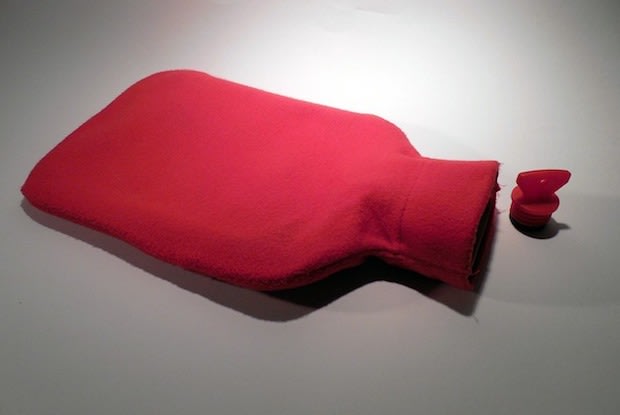Table of Contents
I. What is a Urinary Tract Infection?
II. Symptoms of a Urinary Tract Infection
III. What Causes a Urinary Tract Infection?
a. How Does the Urinary Tract Work?
IV. Urinary Tract Infection Treatments
What is a Urinary Tract Infection?
A urinary tract infection (UTI) is an infection that affects any part of your urinary system. This can include your bladder, kidneys, or urethra. UTIs are very common, especially in women. In the United States, between 25 and 40 percent of women aged 20-40 have had a UTI. [1] By contrast, around 10 percent of men will get a UTI during their life. [2] Urinary tract infections are more likely to affect women as women have a shorter urethra, so bacteria have less distance to travel. [3]
If you believe that you may have a UTI, it is important to get it checked by a doctor. Urinary tract infections can be treated with antibiotics. Common medications to treat UTIs include Keflex (cephalexin), Macrodantin (nitrofurantoin), and Bactrim (trimethoprim/sulfamethoxazole). However, when UTIs are left untreated, they can cause serious complications, especially if the UTI spreads to the kidneys. [4]
Keep reading to learn more about urinary tract infections, including the symptoms, causes, and treatments available.
Symptoms of a Urinary Tract Infection
Not all urinary tract infections cause symptoms. However, there are several common symptoms of a UTI. You should contact your doctor if you are experiencing any of the following:
- Persistent or frequent urges to urinate
- Painful or burning urination
- Brown, red, pink, or cloudy urine
- Strong-smelling urine
- In women, pain in the center of the pelvis or surrounding the pubic bone [4]
There are several types of urinary tract infections. The symptoms of a UTI can vary depending on where the urinary tract that the infection occurs.

a. Cystitis
Cystitis is a UTI that occurs in the bladder. Cystitis may affect your urine in multiple ways. For people with cystitis, urination may be painful and can appear cloudy or bloody. Cystitis may also increase the frequency that you need to urine. Even when you have intense urges to urinate, you may only get a few drops of urine. This is a result of bladder irritation.
Additionally, this type of UTI can cause pain in the lower part of the abdomen and pressure in the pelvic area. [2]
b. Urethritis
As the name suggests, urethritis is the name given to a UTI in the urethra. The urethra is the tube connecting the bladder to the exterior of the body that urine travels through in order to urinate. Urethritis can cause a burning sensation during urination and may also cause discharge.
c. Pyelonephritis
A urinary tract infection in the kidneys is known as pyelonephritis. This type of UTI causes symptoms including nausea, vomiting, fever, chills, and pain in your side or upper back. [2] It is vital to treat pyelonephritis promptly as kidney infections may spread into the bloodstream and cause severe complications.
What Causes a Urinary Tract Infection?
a. How Does the Urinary Tract Work?
The urinary tract includes the kidneys, ureters, bladder, and urethra. The function of the area is to produce, store, and remove urine. The kidneys filter waste from the blood, which produces urine. The urine then travels along the ureters so that it can be stored by the bladder. Urine is removed from the body by the urethra through either a vaginal opening or the end of the penis. [3]
b. How does a UTI Occur?
Normal urine does not contain bacteria. However, bacteria do live on your skin in the areas surrounding the vagina, penis, and rectum. This bacteria may get into the urethra and then travel to the bladder or kidneys to cause a UTI.

c. Risk Factors for UTIs
Urinary tract infections are most likely to affect women and some women are more prone than others to getting UTIs. There are many factors that can increase the chance of developing a UTI.
Birth Control: Some forms of birth control are more likely than others to result in a UTI. Using a diaphragm or condoms with spermicidal foam can increase the chance of developing a UTI. [3]
Immune System: Medical conditions that affect the immune system, such as HIV or type 2 diabetes, may increase the chance of getting a UTI. This is because a weakened immune system is not able to fight germs as effectively.
Body Factors: UTIs are more common in people that have a blockage in the urinary tract. This may be the result of an abnormality, including conditions such as kidney stones or a medical device inserted into the urinary tract. Structural abnormalities are more common in children but can affect people of any age.
Urinary Tract Infection Treatments
a. Antibiotics
Urinary tract infections are typically treated using antibiotics. Often this may be Keflex (cephalexin), Macrodantin (nitrofurantoin), or Bactrim (trimethoprim/sulfamethoxazole). Once treatment begins, symptoms should begin to clear within five days. When taking any antibiotics, it is always important to take all of the medication prescribed, even when symptoms have improved. If a UTI persists or returns, your doctor may prescribe a longer course of antibiotics.
More severe urinary tract infections may require hospitalization for treatment. This is more common for men and children that have UTIs. [5]
b. Treating a Mild UTI
Overuse of antibiotics can cause antibiotic resistance. Mild urinary tract infections will often pass within a few days without the need for antibiotics. When this occurs, over-the-counter painkillers such as paracetamol can help relieve the pain. You may also want to try placing a hot water bottle in the painful area, such as between the legs or on your stomach.

Other things that can help include resting and drinking plenty of fluids to help your body remove the bacteria. Taking cranberry products such as cranberry juice or cranberry tablets can also help. If you think that you may have a UTI, it may also help to avoid sex until you feel better. [5]
The content in this article is intended for informational purposes only. This website does not provide medical advice. In all circumstances, you should always seek the advice of your physician and/or other qualified health professionals(s) for drug, medical condition, or treatment advice. The content provided on this website is not a substitute for professional medical advice, diagnosis or treatment.
